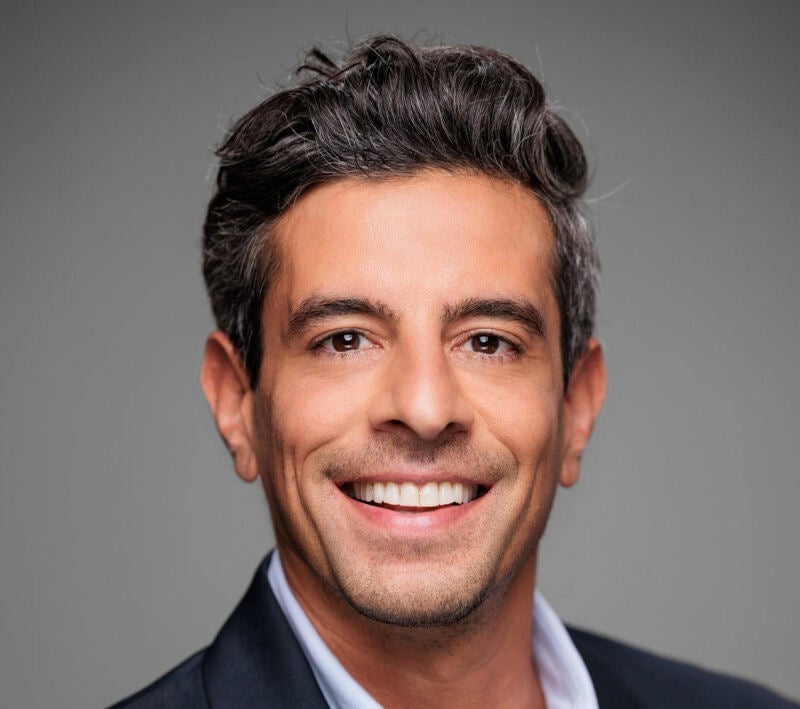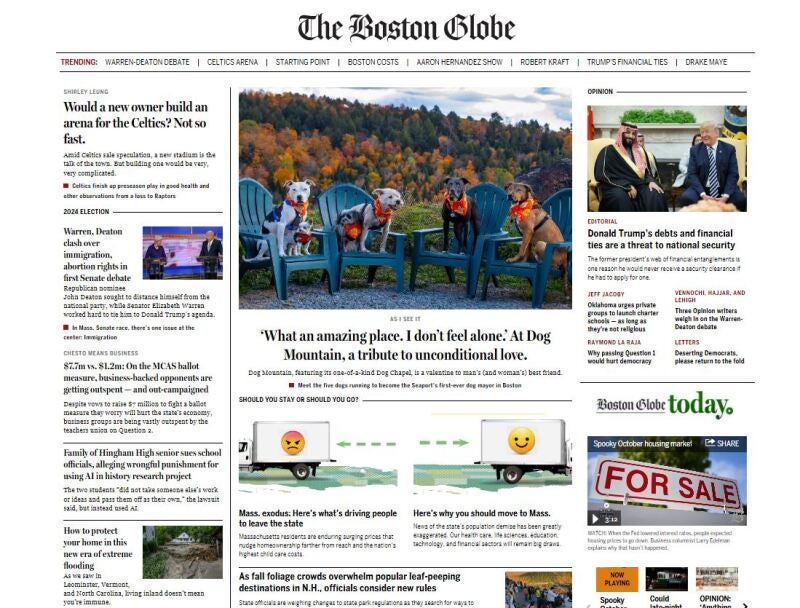
Like so many regional media brands, the Boston Globe nearly went out of business in 2009 after the financial crash.
Today it stands out as an exemplar of how journalism can not just survive but thrive in the digital age.
In the latest Press Gazette Future of Media Explained podcast, the title’s chief commercial officer Kayvan Salmanpour explained how the multi-Pulitzer Prize-winning title carried off an evolution many other regional publishers have struggled to replicate. The episode, which was sponsored by digital publishing platform Quintype, also featured insight from that company’s vice president of international partnerships Chad Hussain.
Privately-owned Boston Globe Media does not publish financial results but today has close to 1,000 employees, with 261,000 digital subscriptions and 75,000 in print.
London’s main news publisher, the Standard, is believed to have somewhere between 100-150 staff left after moving to free weekly publication last month and it has made seven straight years of losses. The reported GDP of the greater Boston area (at around $500bn) is only slightly smaller than that of London so the comparison in fortunes between the two brands (one paid-for and the other free) is instructional.

Asked how the Globe has managed to get where it is today, Kayvan started by setting out the situation in 2009 (at which time the Globe was still owned by the New York Times which had bought it for $1bn in 1993).
Key decisions which saved the Boston Globe
He said: “It was losing a lot of its audience to the web, Google was eating its classified business and Facebook was eating its SMB [small and medium-sized business] advertising business. It got to the stage where a lot of important decisions had to be made.
“The first important decision was separating Boston.com from The Globe. One would be free and one would be a premium paid reader revenue-focused site which was Globe.com.”
Today the two newsbrands still exist side by side. Boston.com offers general news and lighter lifestyle content and acts as a funnel towards Bostonglobe.com where readers are offered greater depth and more focused local coverage.
Local Boston business couple John and Linda Henry bought the Globe in 2013 for $70m.
Salmanpour said: “They were adamant that the Globe’s future was going to be focused on being a reader-revenue-focused site.”
The cost for online access was raised by 72% from $3.99 per week to $1 per day.
Salmanour said they had expected to lose up to 40% of subscribers following the move, but instead only lost 3%.
The next key decision came in 2018 when subscriber growth flattened out. After testing out various trial offers they settled the deal which continues to this day of allowing people to trial the Globe website for six months for just $1. This is combined with a metered paywall which offers readers just one free article before they are invited to pay.
The new offer led to a ten-fold increase in subscription conversions.

Salmanpour said: “They were engaging with the content as much as those who were pre-trial offer. We realised people want to pay for the content but they may not want to pay $30 off the bat.
“At the end of the six-month trial period, for the first and second full price payment we saw a significant drop out, but by the third and fourth and fifth payments the retention rate went back to what it was pre-trial offer.”
Significantly, the Globe took the decision not to lift its online paywall when the coronavirus pandemic hit in early 2020.
“Spring 2020 we saw traffic through the roof,” Salmanpour said. “That’s when we saw real growth in subscriptions. At the time a lot of local media companies took their paywalls down but we felt strong enough that Boston.com was providing free Covid content and so was STAT, our B2B media company covering life sciences, so we kept the trial as is and in hindsight a lot of other media companies mentioned to us that they wished they had done the same.”
Rankings and IP are growing revenue areas for Globe
Talking about other revenue areas, Salmanpour singled out events and licensing around its Top Places to Work rankings.
He said: “We sell advertising, events, sponsored tables, tickets and logos – companies have the ability to license our logos to put on their sites which we sell to HR departments rather than marketing. We’ve done that for a number of tent poles and its been really fruitful for us.”
Licensing of the Globe’s intellectual property is another growth revenue area. The hit podcast Gladiator, about an American football player who was implicated in three murders and took his own life, was co-produced with Wondery and has had more than eight million downloads. It began with a story in the Boston Globe and has now been sold to FX which is turning it into a TV series. “IP has proved to be a really good revenue stream,” said Salmanpour.
How the Globe addressed advertising decline
Boston Globe Media has tackled the challenge of growing advertising revenue by taking very different approaches according to the size of deal.
Salmanpour explained: “When I joined six years ago there was a consistent year-over-year decline in advertising. One of the first things I did was an audit of the advertising business. We realised 45% of our clients accounted for 8% of revenue, they were tiny deals, 50% of revenue came from deals over $75,000.
“To get more deals over $75,000 we needed more sophisticated agency and content sellers to do multimedia programmes that we could pitch directly to advertisers.
“We teamed up with Fenway Sports [which runs the Boston Red Sox baseball team and is also owned by the Henry family] and properties like Red Sox to create scale and for these deals and we ended up closing more deals over $75,000.”
To help grow mid-tier advertising deals, Salmanpour recruited a general manager of editorial initiatives.
He said: “This is a former journalist who is interested in the business side of the media. Their role is to bridge the gap between advertising and the newsroom.
“They lead coordination efforts between the newsroom, sales and marketing. They can help on the design of ads units and make sure upcoming newsroom projects are created in a way that a sponsor might be interested and work on the editorial calendar.
“It’s a very nuanced role. They have to be very trustworthy. They don’t work on commission. They’re very mission-orientated. And that really changed the game for us. We increased newsletter revenue and we increased events revenue.”
To fulfil any deals under $10,000, Globe Media invested in a self-serve buying platform which mimicked the tactics of Google and Facebook.
He said: “That machine has helped us weather the storm with advertising.”
The Globe has also worked hard to grow advertising revenue from strong local business verticals.
He said: “We have strategically aligned ourselves with valuable industries within Boston and almost had a B2B media approach to it. Healthcare is a perfect example. Boston is a big healthcare region. We designed a lot of programmes, video series and newsletters around the healthcare community in Boston. We’ve nurtured healthcare audiences as a result.
“And we’ve positioned ourselves in the same way as say the Washington Post does for politics and the Wall Street Journal does for business. We’re trying to do the same for healthcare and it’s attracted a lot of pharma advertising.”
Native newsletters attract Gen Z readers
To attract new Gen Z readers, the Globe launched a newsletter called B-Side two years ago which now claims some 35,000 subscribers.
Salmanpour said: “It was conceived as a creator-driven, mobile-first, native newsletter where we don’t link back to the paywall. It is very social video-focused.”
B-Side has helped The Globe work with advertisers who did not want to spend with the Globe before, like online food ordering app Door Dash. Another newsletter called B-Side Sports has also launched, focused around sports culture and athlete-driven content.
Salmanpour said: “It’s optimistic, it’s positive, ad-friendly and accessible. These things are really hard to do. You have to get the tone right. You have to get that creator and have to get the right mix between local news and hitting the cultural zeitgeist as well.”
More online reader revenue for local publishers is a global trend
Quintype vice president Chad Hussain said local news publishers around the world are increasingly focusing on reader revenue.
He said: “Most of the publishers we are talking to are in single digital decline in their ad model, but simultaneously their audiences are growing.
“There is a shift in Asia and it has been accelerating, moving towards a different business model: reader revenue and subscriptions. Subscriptions are part of a narrative where they are looking for a direct-to-consumer business model.
“The way that you tell a story has become very important. If you are going to pursue a reader revenue model, optimising for engagement rather than performance or page views is important. You need to create content for a digitally native reader.
“When you look at smaller titles they have really got to master three things: visual storytelling, linear storytelling and being mobile first. Pictures, video and visualisations are what the digitally native consumer expects. They expect to be taken through a narrative with a visual medium.”
Asked what key piece of advice he would have for other local news publishers, Salmanpour said: “We did a lot of complex testing which ultimately brought us back around to the simplicity of what we were offering: create a great product, allow audiences to sample it, create a seamless way for them to trial the product and then repeat that as much as possible and keep things simple.”
Email pged@pressgazette.co.uk to point out mistakes, provide story tips or send in a letter for publication on our "Letters Page" blog
